
| The Projects |

|
CSCI 460 - Capstone Experience - Spring 2017
|
 Dino Kijkul |
Tag Clouds | 6:00pm, Monday April 24, GMS 1097 |
| My project utilizes a third party program to gather data from a web source. A program then organizes and processes the data using a filter. A second program generates a tag cloud based on the data. The more frequent the word, the larger it is portrayed in the tag cloud. The tag cloud is supposed to minimize white space between words, and be able to process up to 100 words at a time. | ||
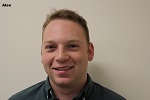 Alex Dowlding |
LiftCoach | 6:30pm, Monday April 24, GMS 1097 |
| Weightlifting is part of the routine for body builders but it also can act as a supplement to living a healthy life. LiftCoach, an android app, allows users from all walks of life create, organize, and edit workouts. It also gives feedback to users such as suggesting an increase in weight or suggesting additional lifts. | ||
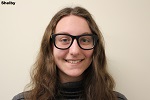 Shelby Kirn |
HealthQuest | 7:00pm, Monday April 24, GMS 1097 |
| HealthQuest is an Android application that obtains data from the user's phone and uses it to allow the user to play a game. It encourages the player to set goals which earn rewards, as well as purchase in-game items, and customize their character's hair, eye, and skin color. | ||
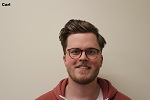 Carl Petersson |
Security Cam | 7:30pm, Monday April 24, GMS 1097 |
| During a normal day we continually interact with cameras in different shapes. It can be the camera on your cellphone or the webcam on your laptop. In my project I got the chance to interact with a Foscam security camera while constructing a C# application that together will create a surveillance system that can be used at any location. I tackled both simple and complex problems such as creating an easy to use user interface and getting the camera to detect motion. | ||
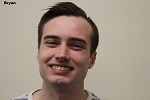 Bryan Kelly |
State-Space Search | 8:00pm, Monday April 24, GMS 1097 |
| As we strive to automate aspects of our lives we must teach computers how to find solutions to problems we may find quite simple. My program visualizes various state-space search techniques in a way that will help us understand how a robot may attempt to reach a destination. The rules are that a robot can only push target blocks to their destination. | ||
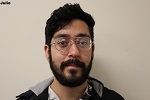 Julio Fuentes |
Self-Driving Car | 8:30pm, Monday April 24, GMS 1097 |
| Self driving cars are already on the road! Though we won't see them in our everyday lives for a while, the technology is already here. What we will be seeing in our everyday lives is an increase in "smart" car technology. The ability to stop the car automatically before hitting something, or following the road, and automatic parallel parking are already incorporated in newer car models. My project demonstrates a scaled down version of the self driving cars in today's world, as well as the "smart" car technology already in today's cars. | ||
 Matteo Toffolon |
Self-Driving Car | 8:30pm Monday April 24, GMS 1097 |
| The intent of this capstone project was to construct a small self-driving robot "car", employing the use of various sensors that, through my own research, appeared to best accommodate the task. Of course, these sensors need programming, which was done using a multi-cored approach to allow for responses in real-time. The completed robot utilizes four distinct sensors to understand and react to its environment; infrared for road detection, sonar for obstacle detection, light-to-voltage to detect colored "road tags", and again infrared for wheel feedback and distance measurement. With these sensors working in tandem, the robot is able to navigate its black tape "road", obeying special rules and avoiding collisions along the way. | ||
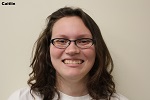 Caitlin Deuchert |
Speech to Music | 6:00pm, Wednesday April 26, GMS 1097 |
| Have you ever wanted to hear your professor singing along to your favorite song? This project will take a voice file and shift the pitch of the speaker up and down in time with a given music file. Now, you can turn that lecture into a more memorable song with some fun pitch detection and shifting algorithms! | ||
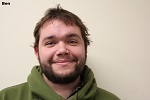 Ben Talbot |
Lab Usage | 6:30pm, Wednesday April 26, GMS 1097 |
| The focus of my project was to be able to monitor the usage of the Computer Lab in GMS: Using a camera's live feed and facial detection software I was able to determine if a person enters the room when unattended. The potential information gained could include statistics on when students are completing homework or projects, most frequented hours, and monitoring which TA hours are most effective. | ||
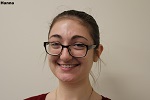 Hanna Raczek |
Augmented Reality SNC Tour | 7:00pm, Wednesday April 26, GMS 1097 |
| See what St. Norbert College has to offer by viewing it through your phone on an augmented reality app. View various points of interest and choose what information you'd like to see when you come into range! Choose between a radar and Google Maps view of the campus, and if you need to get to a particular POI, no problem! Just select the POI, and it will be marked for you both on-screen and on the map. | ||
 Tom Wolf |
Sensing Stress | 6:30pm, Thursday May 5, GMS 1097 |
| I am developing an application for android and fit bit users to help monitor stress levels. My app detects movement, lack of sleep, and current heart rates. This data is collected by the fit bit and processed through my android application. Through the use of background tasks, if the user did not get enough sleep, has been sitting still for too long, or their heart rate is getting too high, the app will send a notification indicating potential stress levels. Other features include a breathing gif, a soothing music player, and a journal to track daily habits and stress levels. | ||
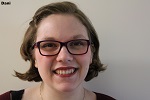 Dani Perzyk |
Animating Climate Change | 8:00pm, Wednesday April 26, GMS 1097 |
| Researchers and politicians have the tendency to overwhelm their audiences with terrifyingly large amounts of data, usually in the form of tables, bar charts, and scatterplots. But what if this didn't have to be the case? My project aims to take Wisconsin climate data and create an animation that will help audiences better understand trends in the large data sets that they are being presented with. | ||
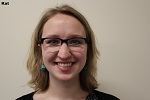 Kat Weber |
Fancy Face | 8:30pm, Wednesday April 26, GMS 1097 |
| Fancyface is an Android application that attaches filters to faces in photos using Google Play's Face API. The user can select from a list of available filters, which are instantly placed on the face, with the option to change the size of the filter if need be. After adding the filter, the user has options to save the photo to their camera roll, attach to a message (or Facebook post, email, etc.), or delete and start over. | ||
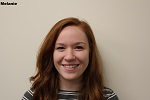 Melanie Othon |
Computer Science Kiosk | 9:00pm, Wednesday April 26, GMS 1097 |
| The Computer Science Kiosk is a mobile Android application that aims to inform students who are considering studying computer science at SNC. In the app, one is able to learn about the requirements and classes they might be taking as a CS student, the projects they will work on including past student capstone websites, words of wisdom from current students, and even a trivia game. The game tests the user's knowledge of both information found within the app as well as general computer science trivia. | ||
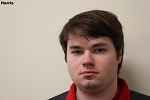 Harris Kelly |
Train Operating System | 9:30am, Thursday April 27, GMS 1097 |
| This program tries to make sure trains do not crash. The train operating system, which I've written, interfaces with a display program written by another student, that I've modified.They communicate through a common folder on the C drive which contains text files used for passing information. The operating system then passes the display program overrides to stop and/or reverse trains that are going to crash. | ||
 Ethan Ward |
Erect A Set | 10:00am, Thursday April 27, GMS 1097 |
| Set notation can difficult to learn at first. The goal of this project is to break down that notation into something visual; allowing a user to see exactly how the final result is calculated. Users will be able to input notation, define sets, and even see generated examples similar to their previous inputs. | ||
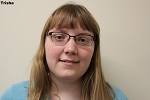 Trisha Wilquet |
Animating Graph Alogorithms | 10:30am, Thursday April 27, GMS 1097 |
| My project allows users to create a graph or open a previously created one and run graph algorithms on it. Users can see step-by-step how algorithms, like Breadth-First Search, Depth-First Search, and Minimum Spanning Tree, traverse through graphs both visually and by text. | ||
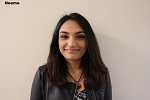 Neema Shekar |
Hidden Images | 11:00am, Thursday April 27, GMS 1097 |
| Steganography is the hiding of text, images. or videos within another text, image, or video, usually in plain sight. My application allows a user to hide and recover a hidden image stored within a base image. | ||